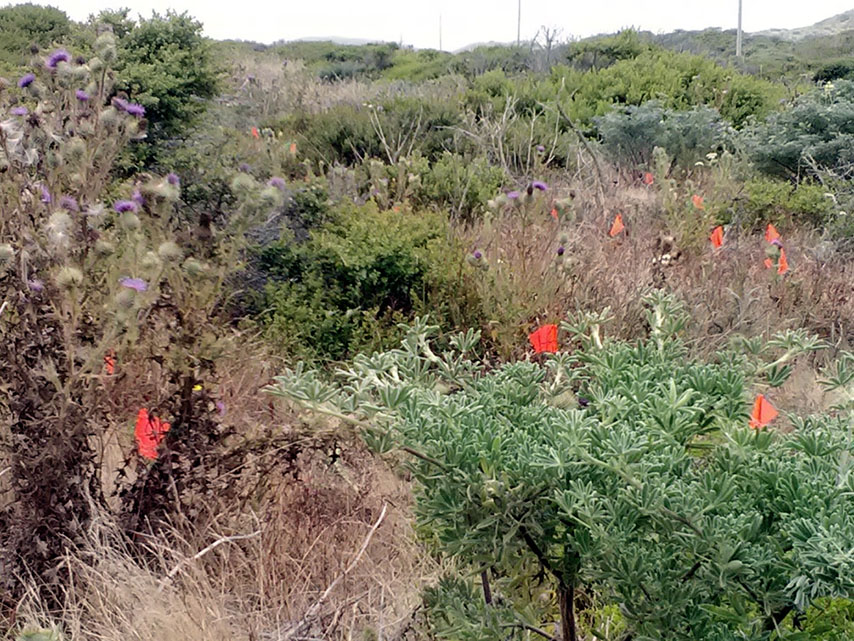
Ecological Archives E096-009-A1
Patrick Grof-Tisza, Marcel Holyoak, Edward Antell, and Richard Karban. 2015. Predation and associational refuge drive ontogenetic niche shifts in an arctiid caterpillar. Ecology 96:80–89. http://dx.doi.org/10.1890/14-1092.1
Appendix A. Figures of pupal predation, mesocosm, physical defense addition, and physical defense removal experiments.
Fig 1. Pupal predation experiment in prairie habitat. Orange flags mark plants where 1 pupa has been affixed. A thistle (C. vulgare) and a bush lupine (L. arboreus ) are visible in the foreground. Photo credit: Patrick Grof-Tisza.
Fig 2. Left and right panels show mesocosm design. Mesocoms (n = 28) consisted of 24-cm flowerpots filled with soil from prairie habitat each containing a similarly sized, transplanted Italian thistle (C. pycnocephalus), and bush lupine (L. arboreus ) plant. Aluminum flashing was used to prevent caterpillar escape. Photo credit: Patrick Grof-Tisza.
Fig 3. A lupine within the treatment group for the physical defense addition experiment, which received a simulated physical defense consisting of a 5 × 5 × 2 cm styrofoam panel with implanted, protruding sewing pins to replicate thistle prickles at a biologically relevant density and length (see methods). The control group received styrofoam panels without pins (not shown). After gluing a pupa to the center of each panel, the panel was glued to the stem of each plant within 1 SD of the mean height of cocoons found during surveys. Photo credit: Patrick Grof-Tisza.
Fig. 4. A control plant used in the physical defense removal experiment, where we clipped prickles from the bottom half of 23 haphazardly selected thistles using surgical scissors and selected 25 unclipped controls. We then glued one pupa to each plant within 1 SD of the mean height of cocoons found during surveys. Photo credit: Patrick Grof-Tisza.